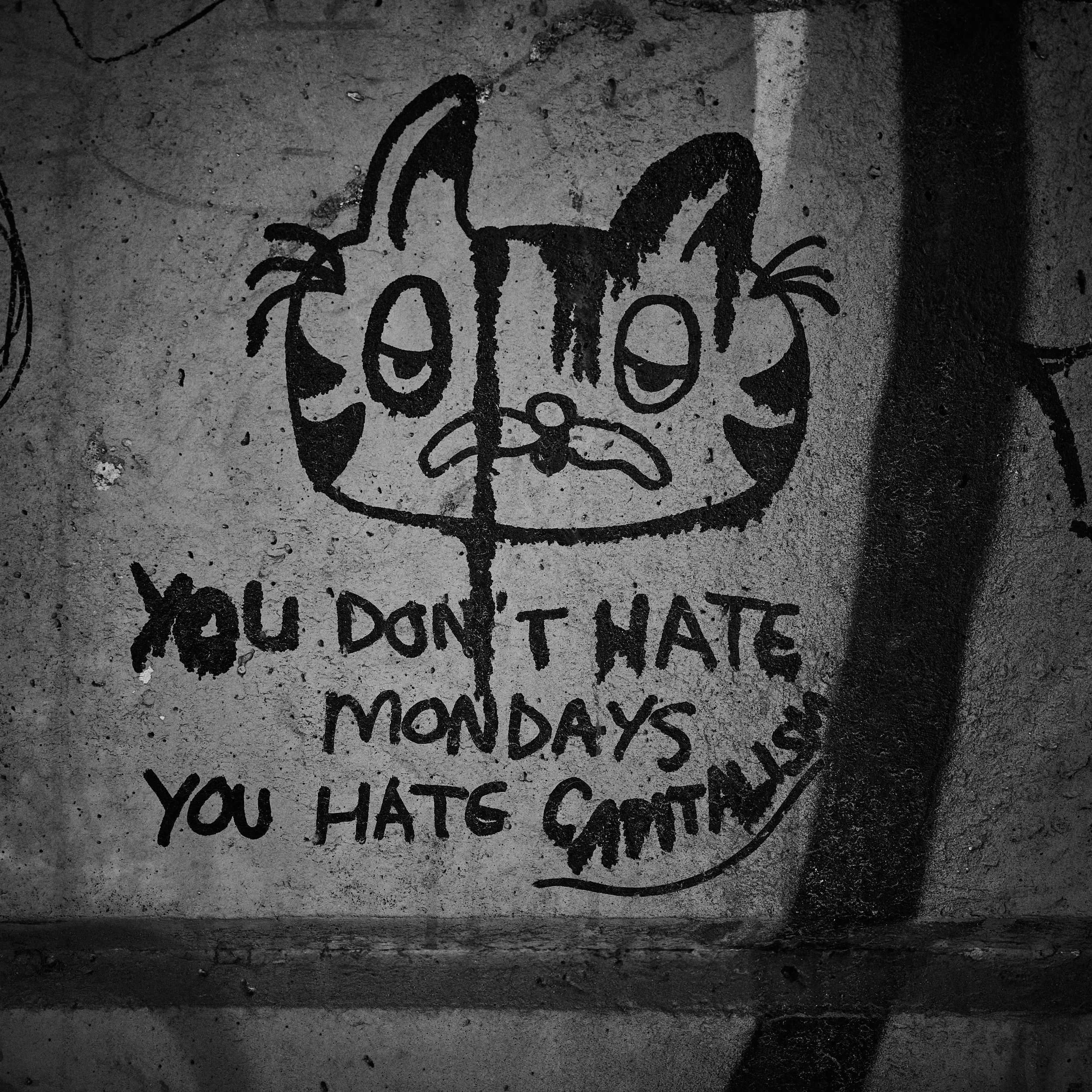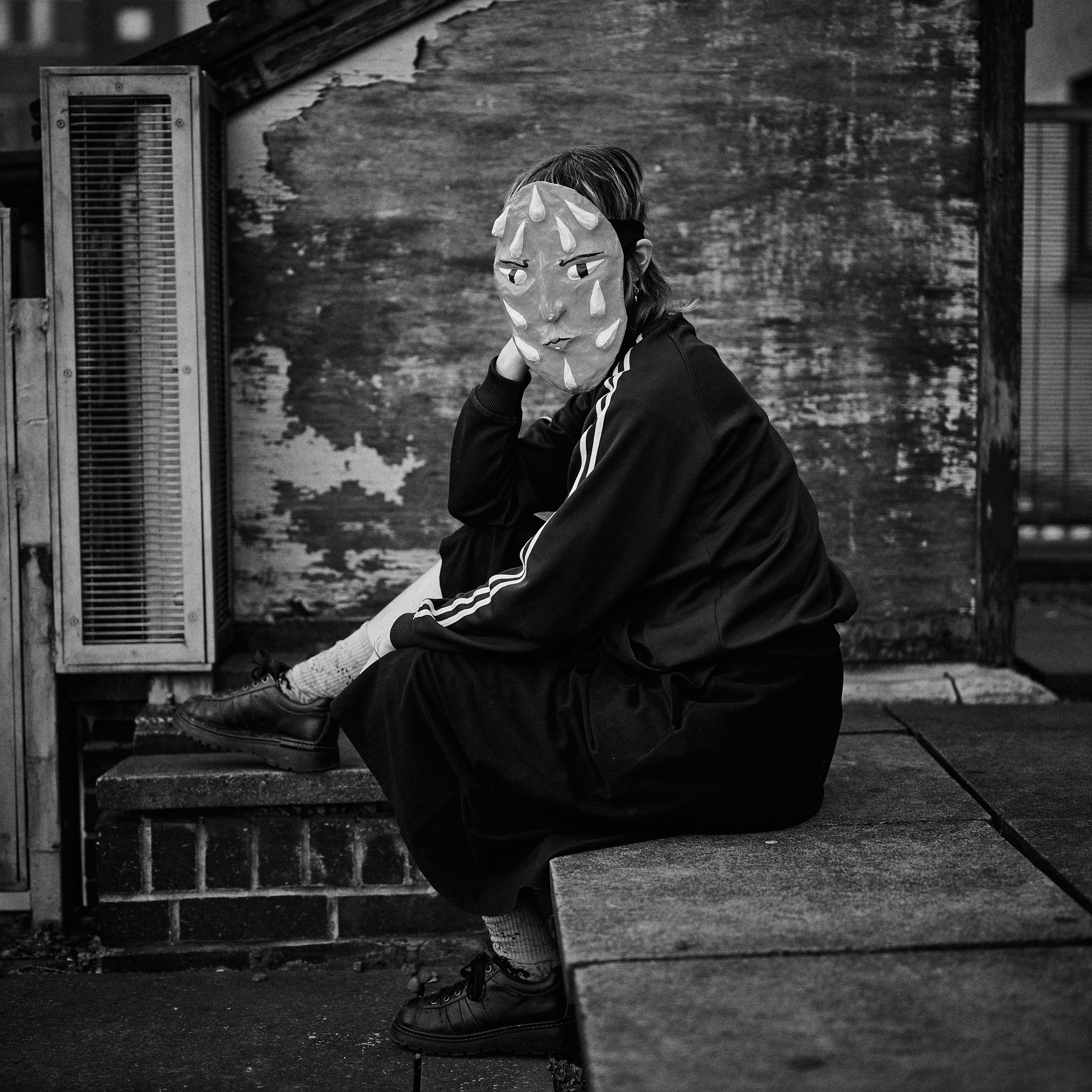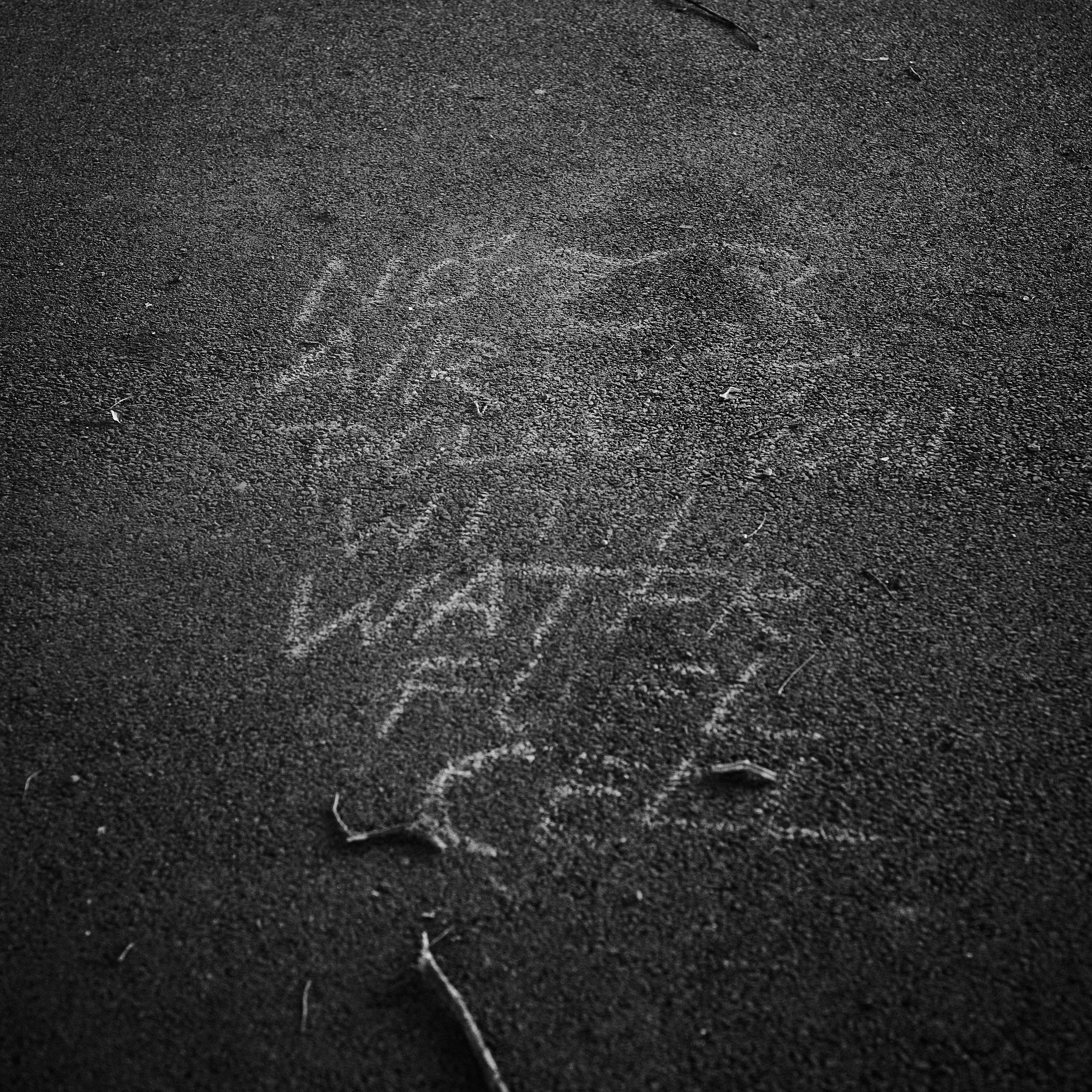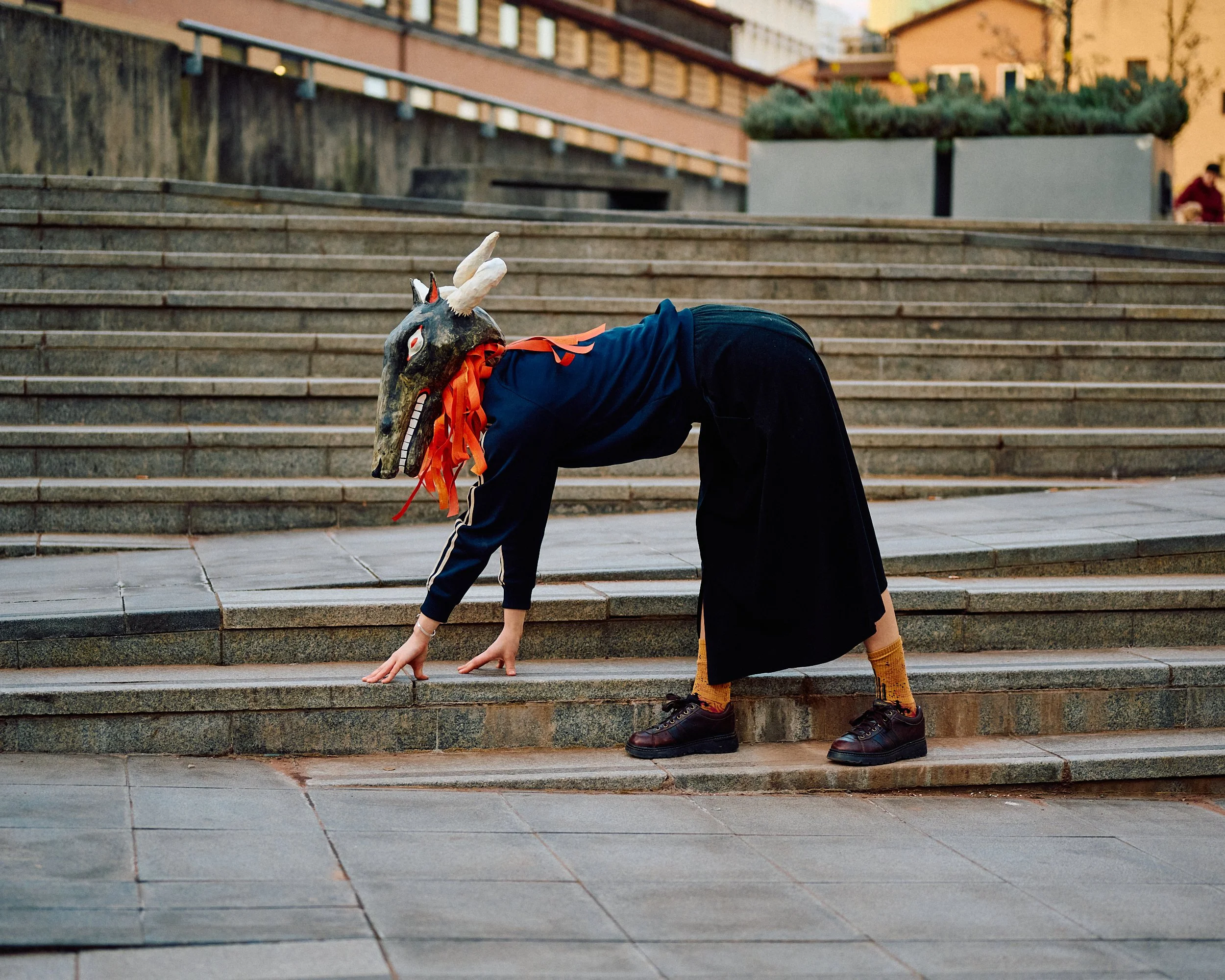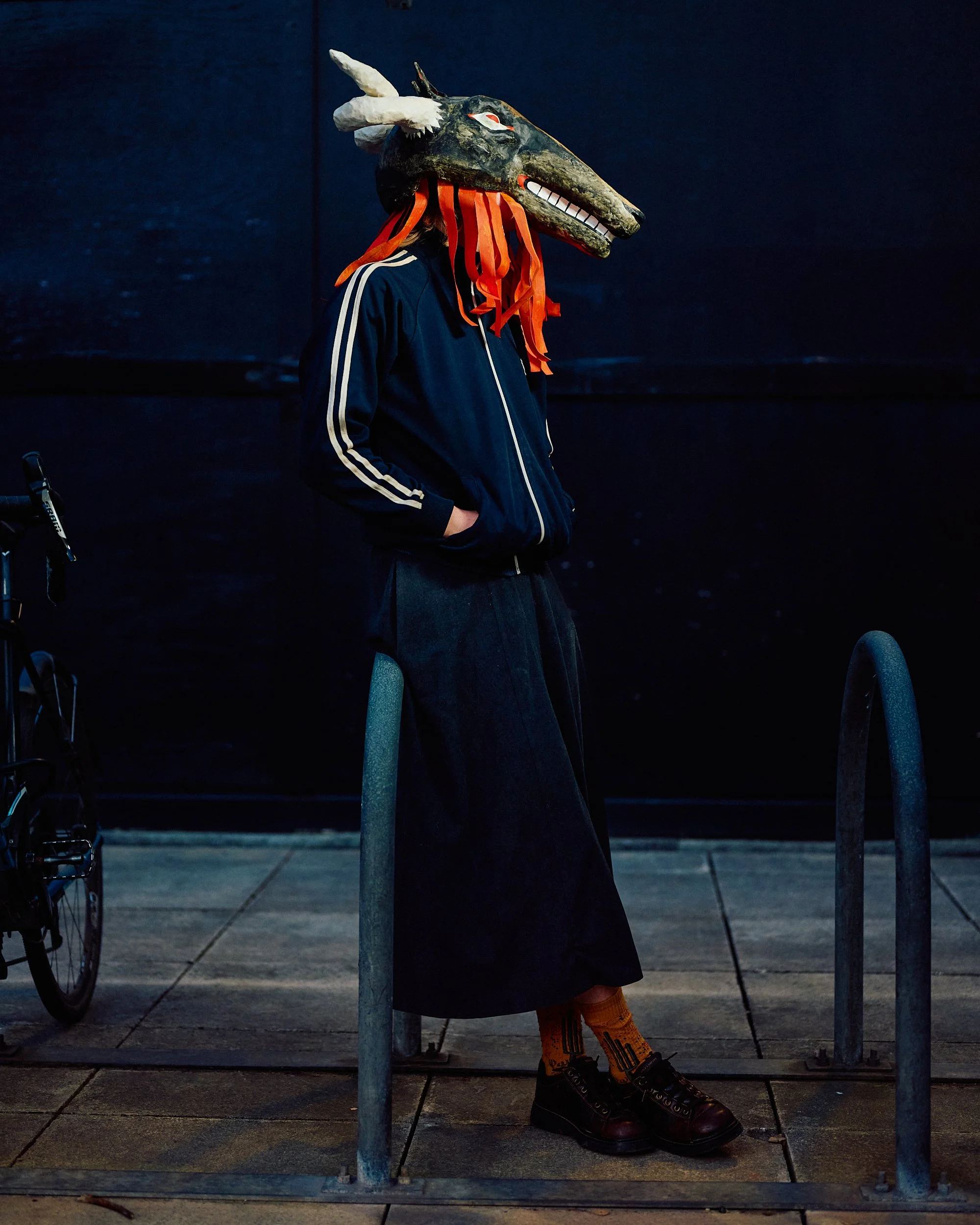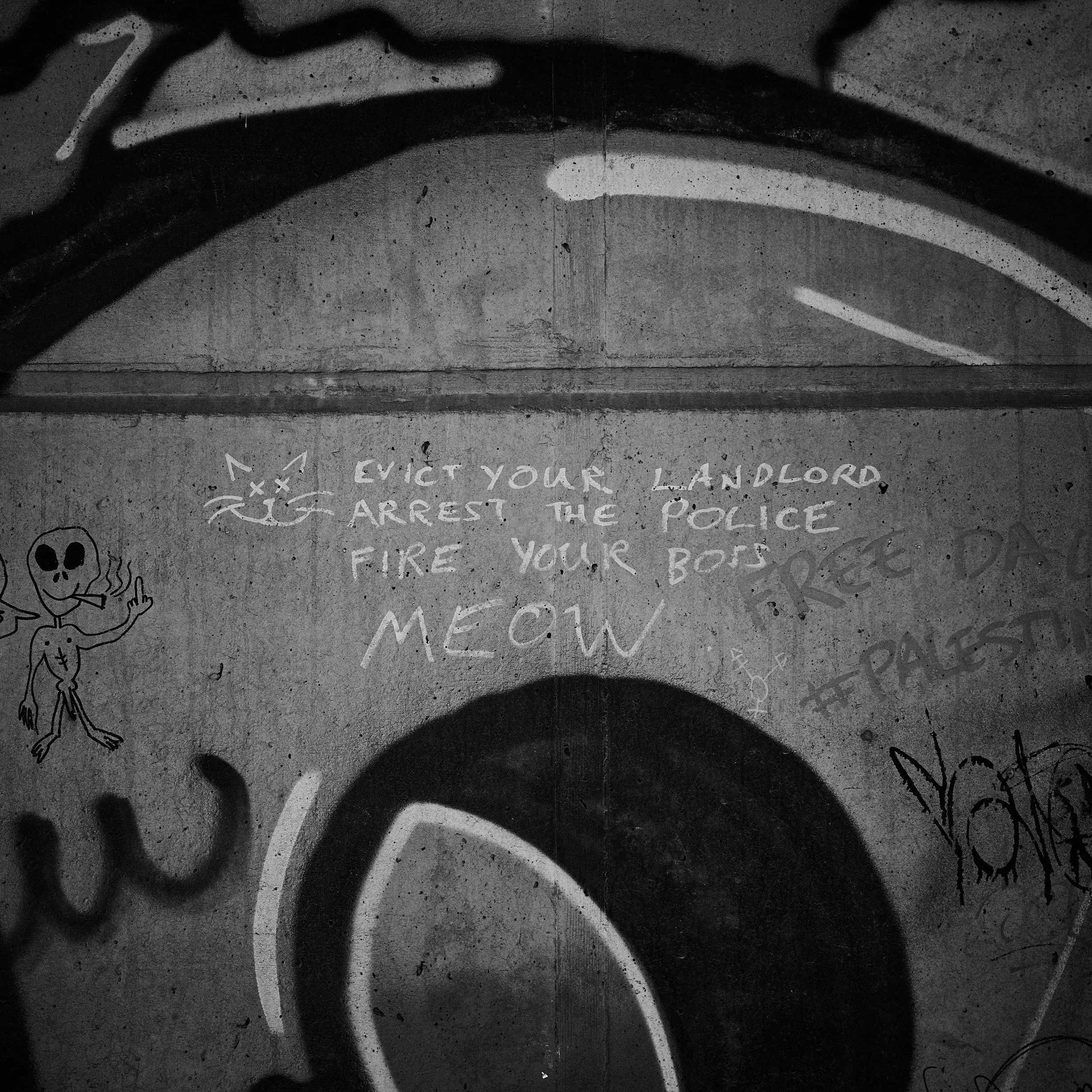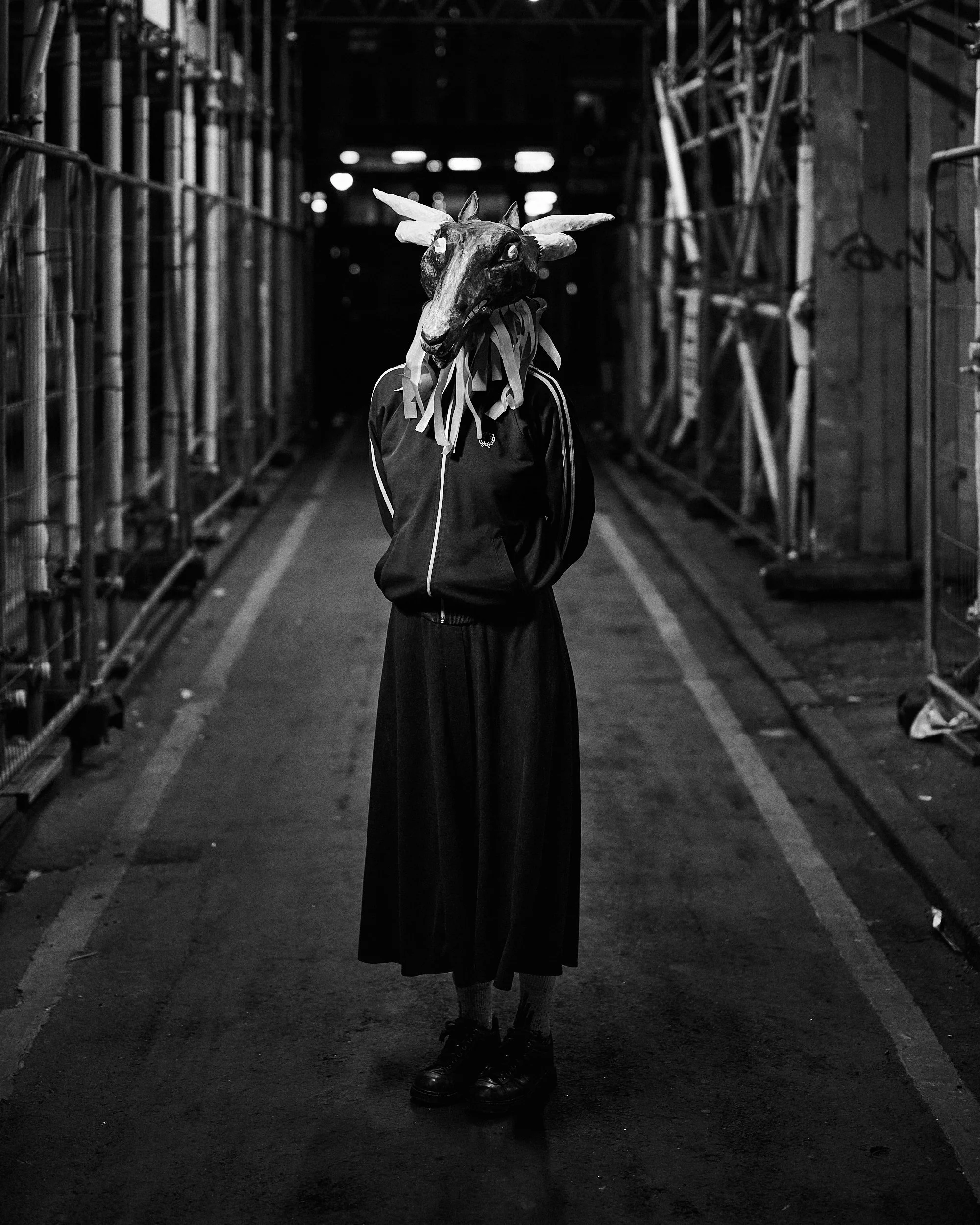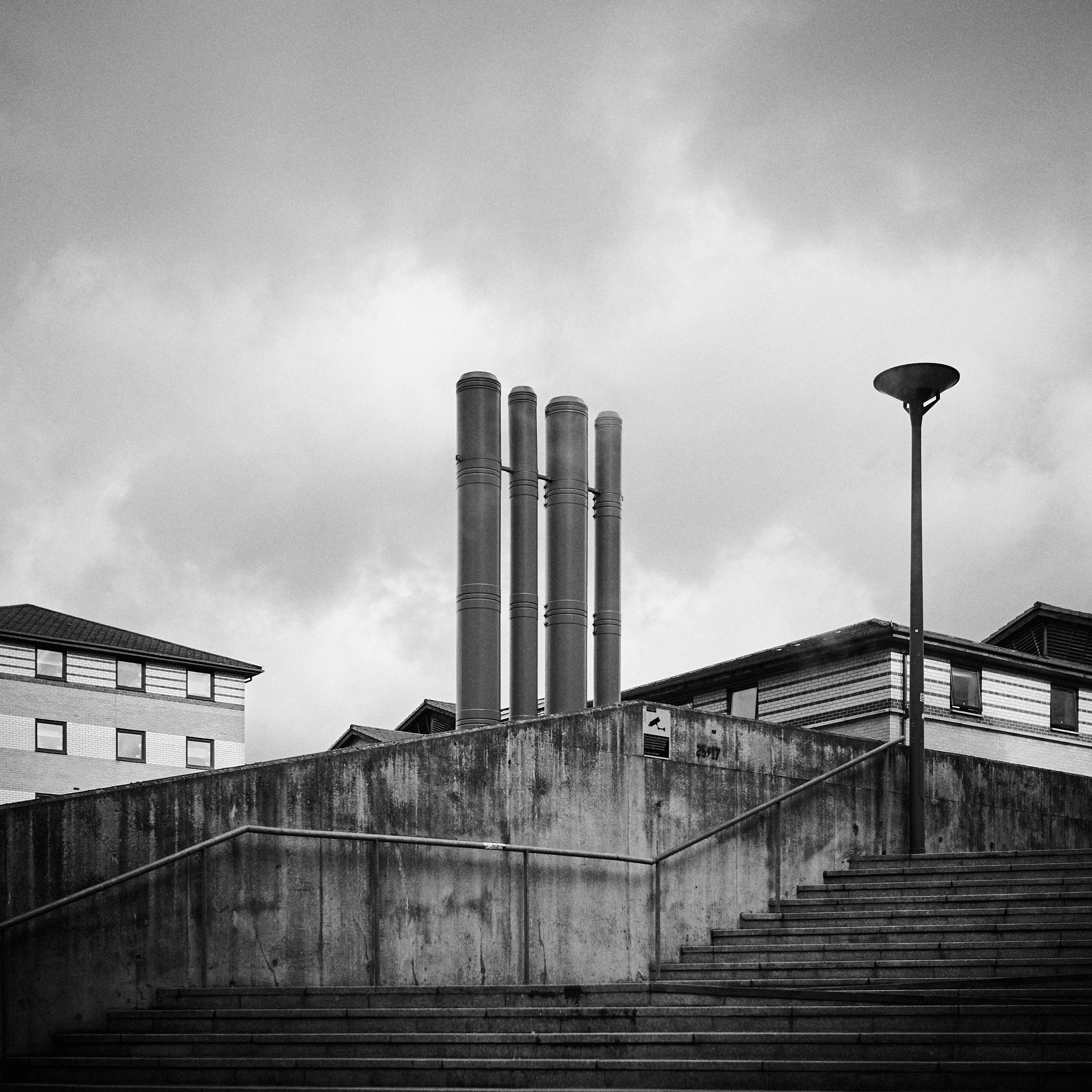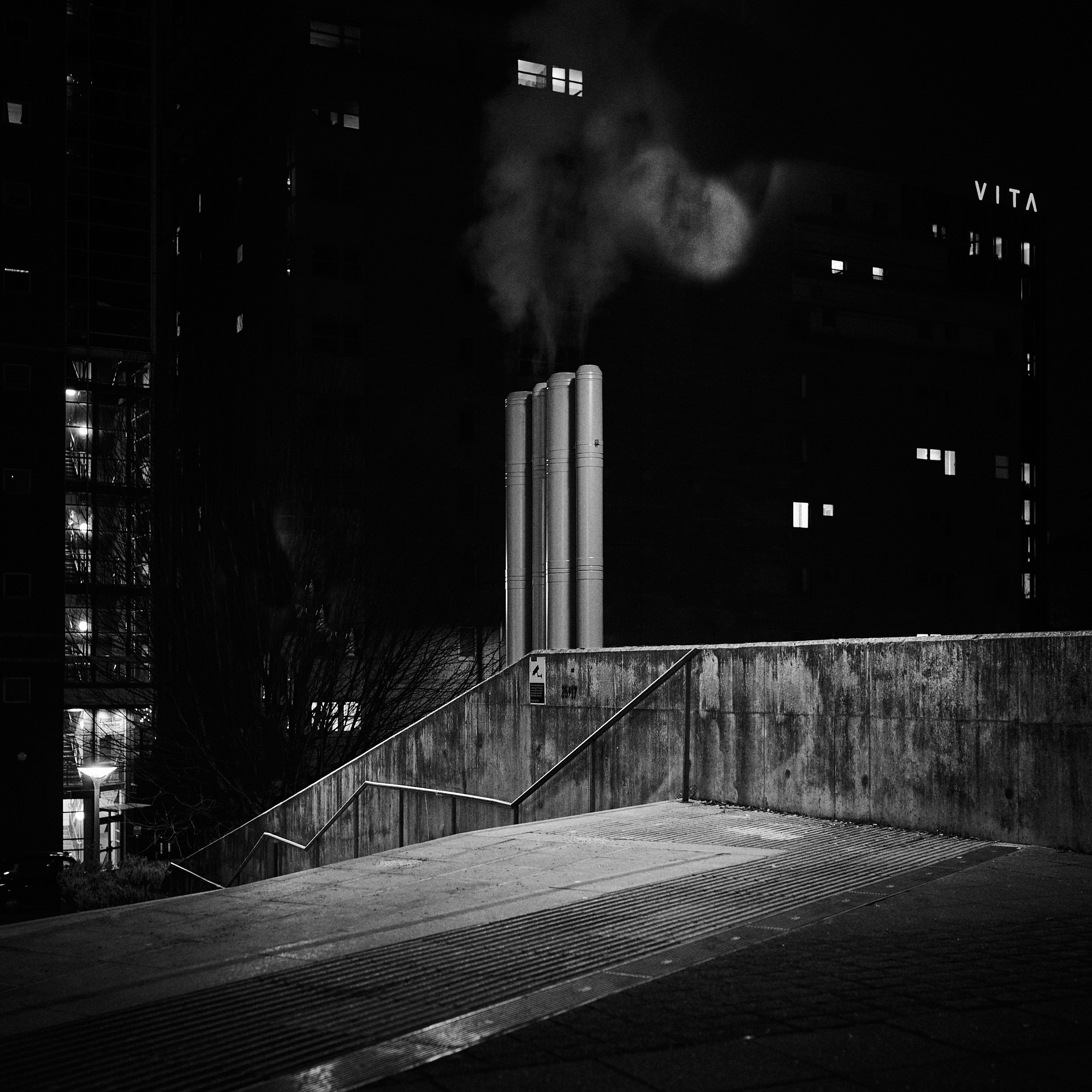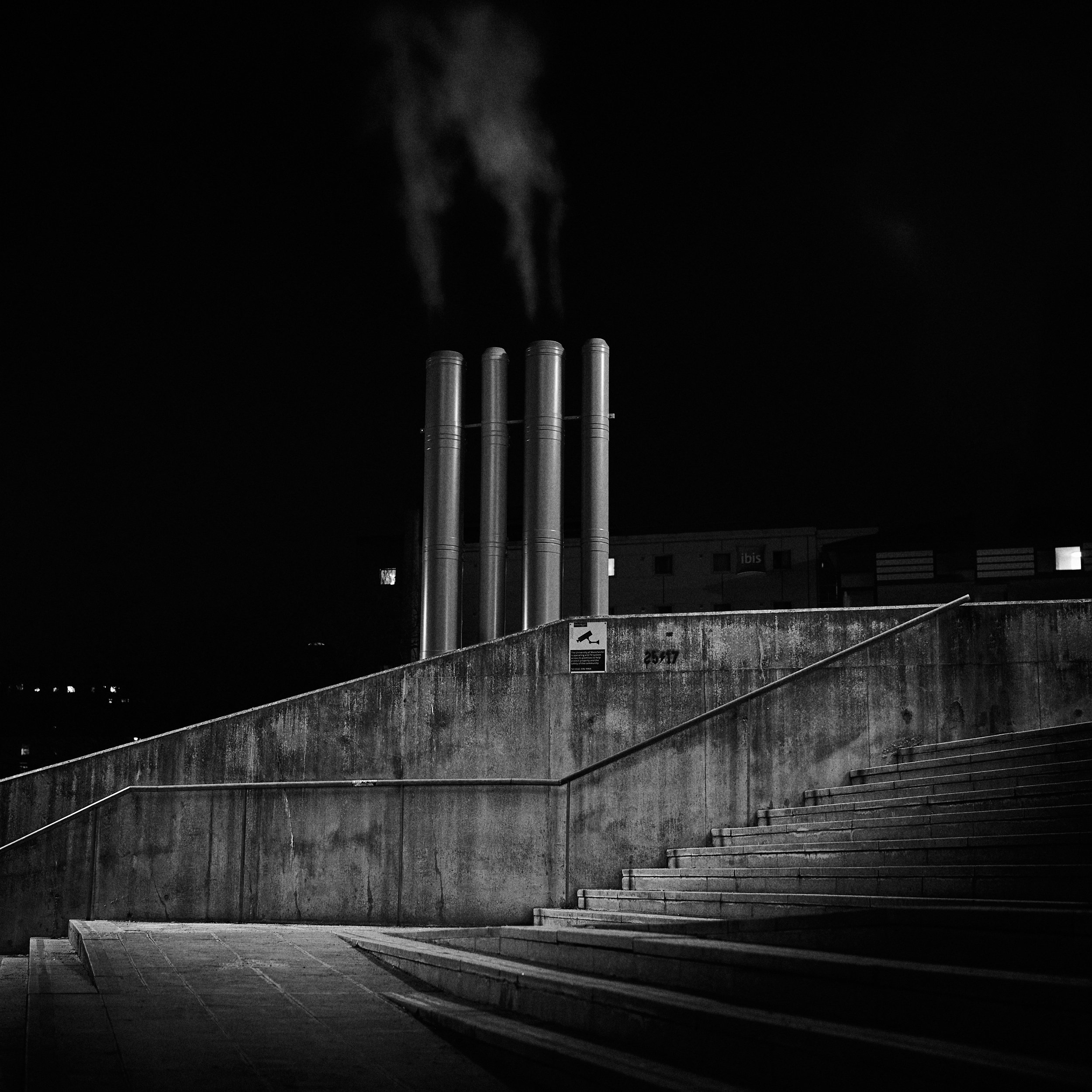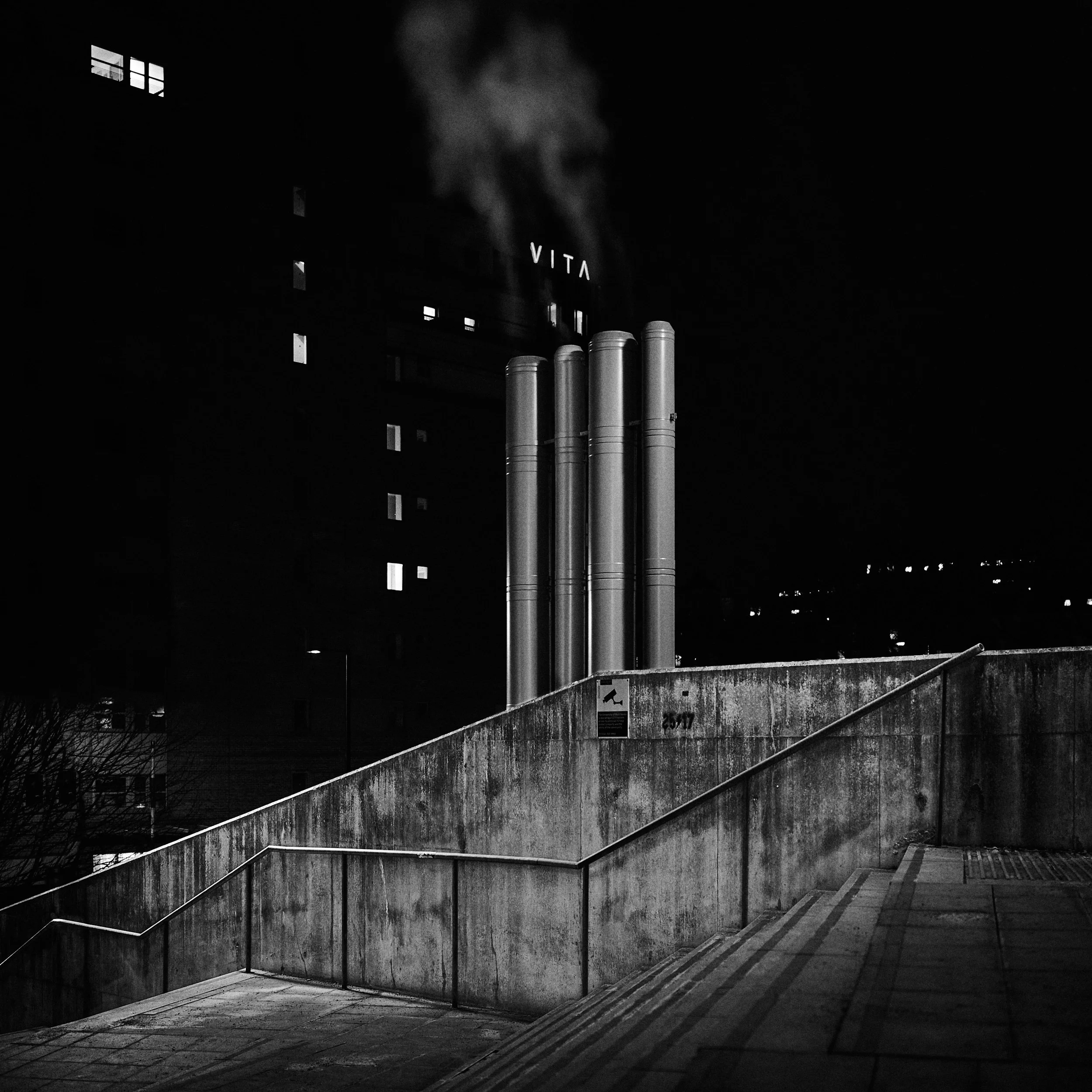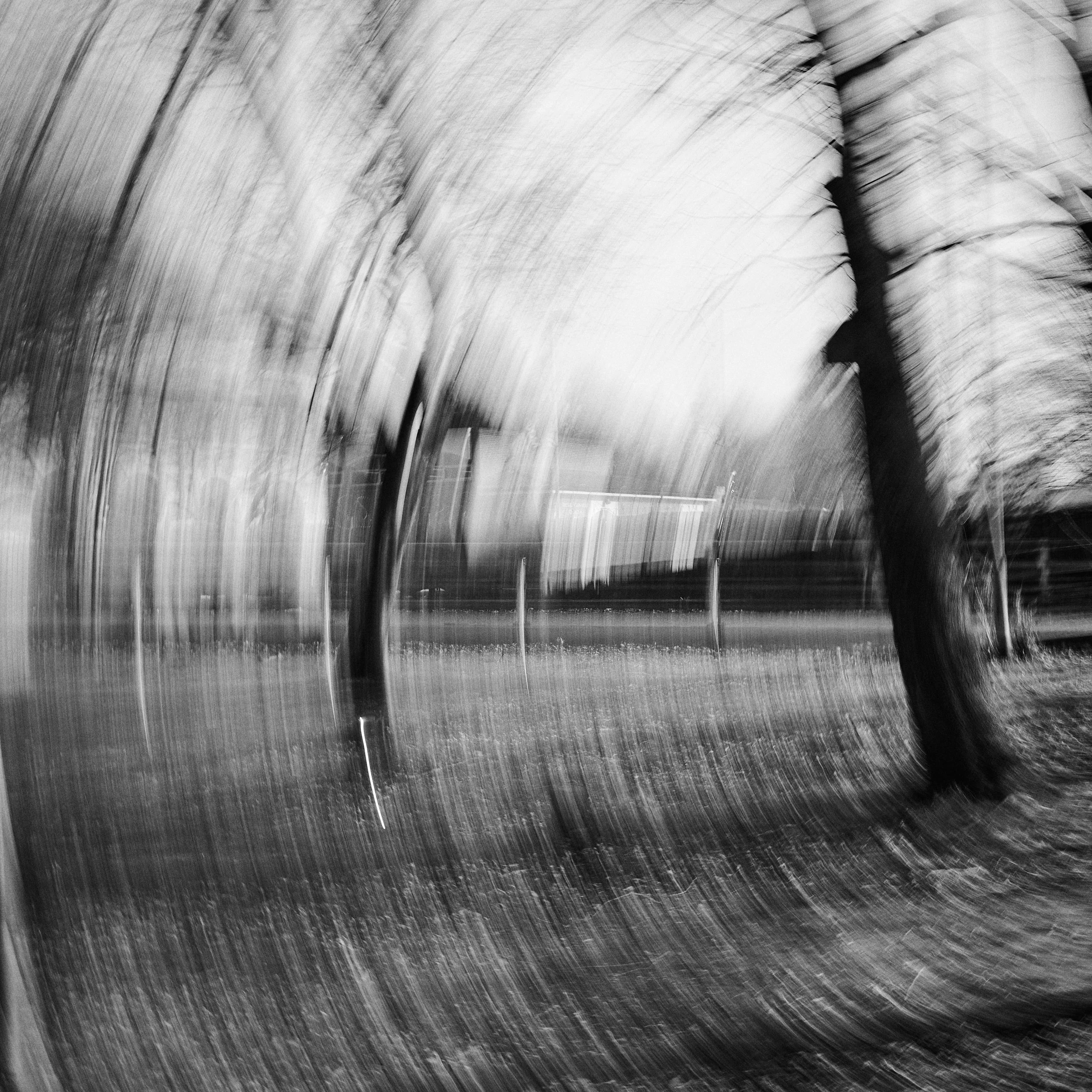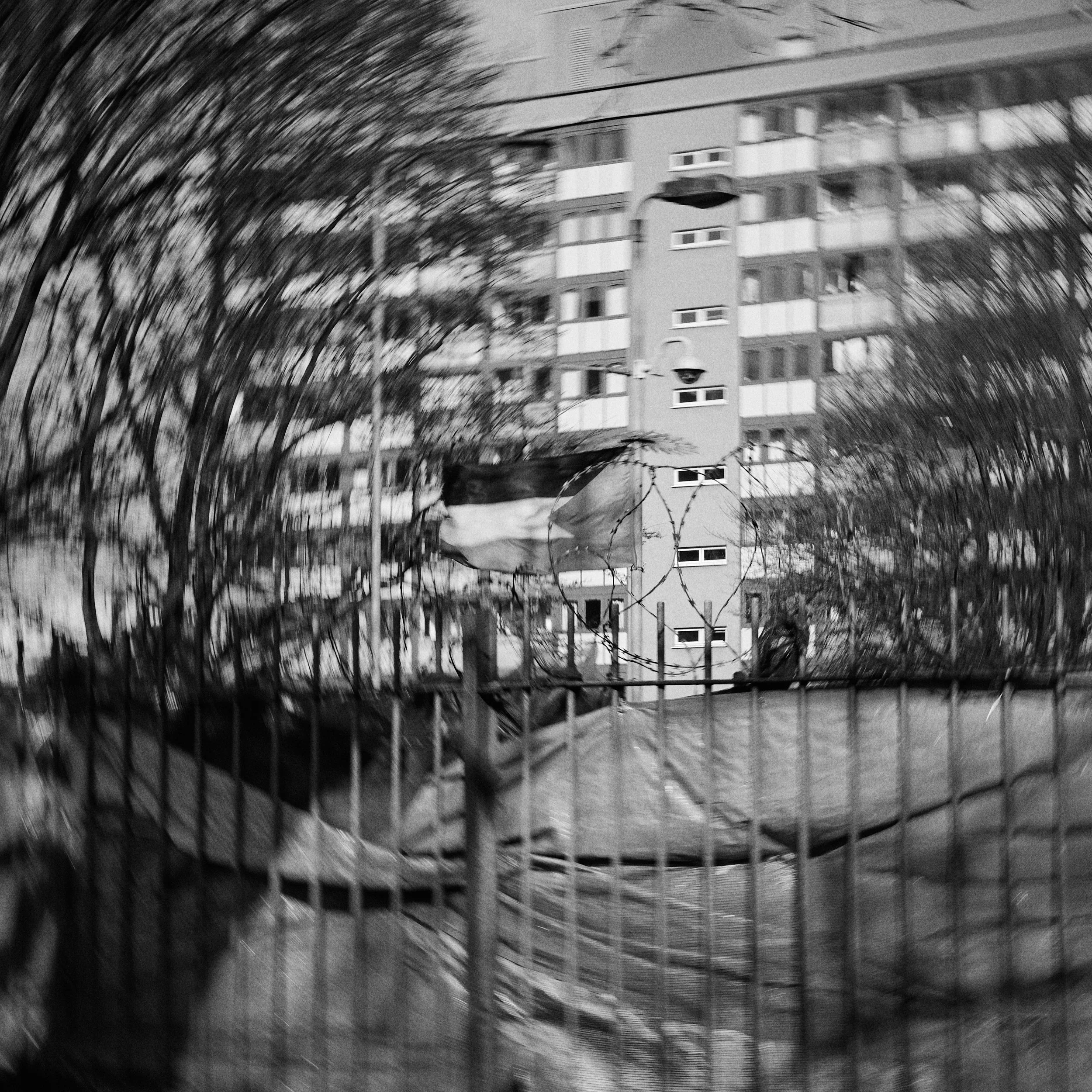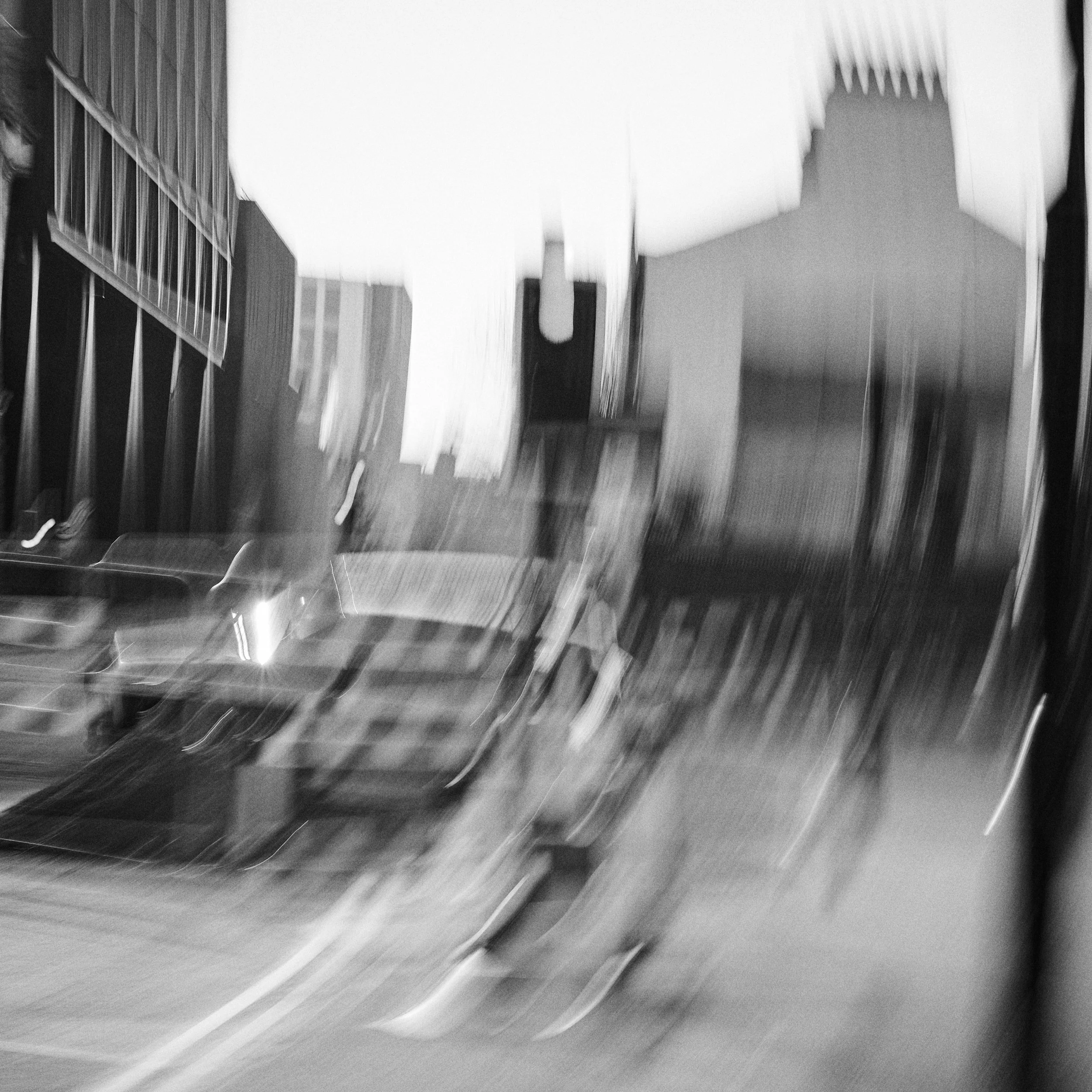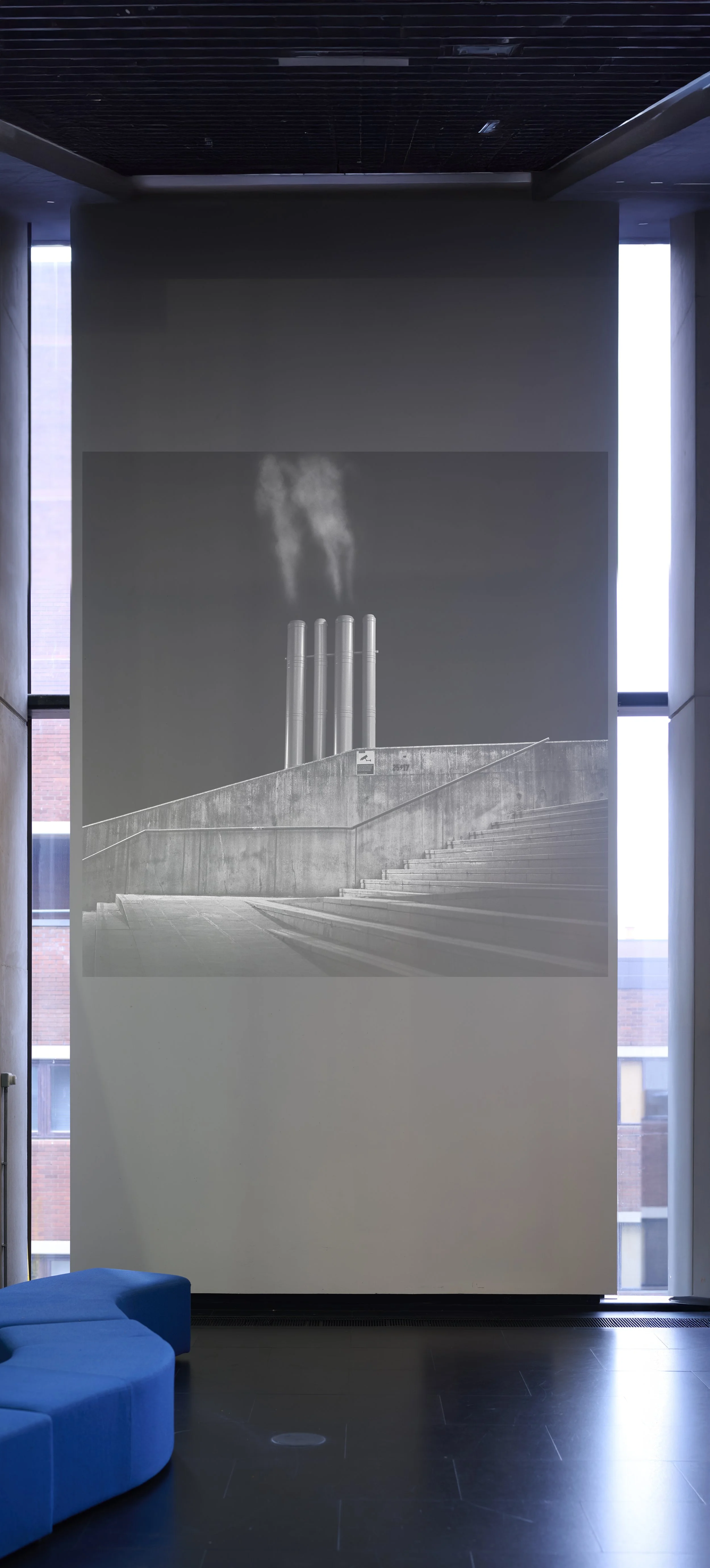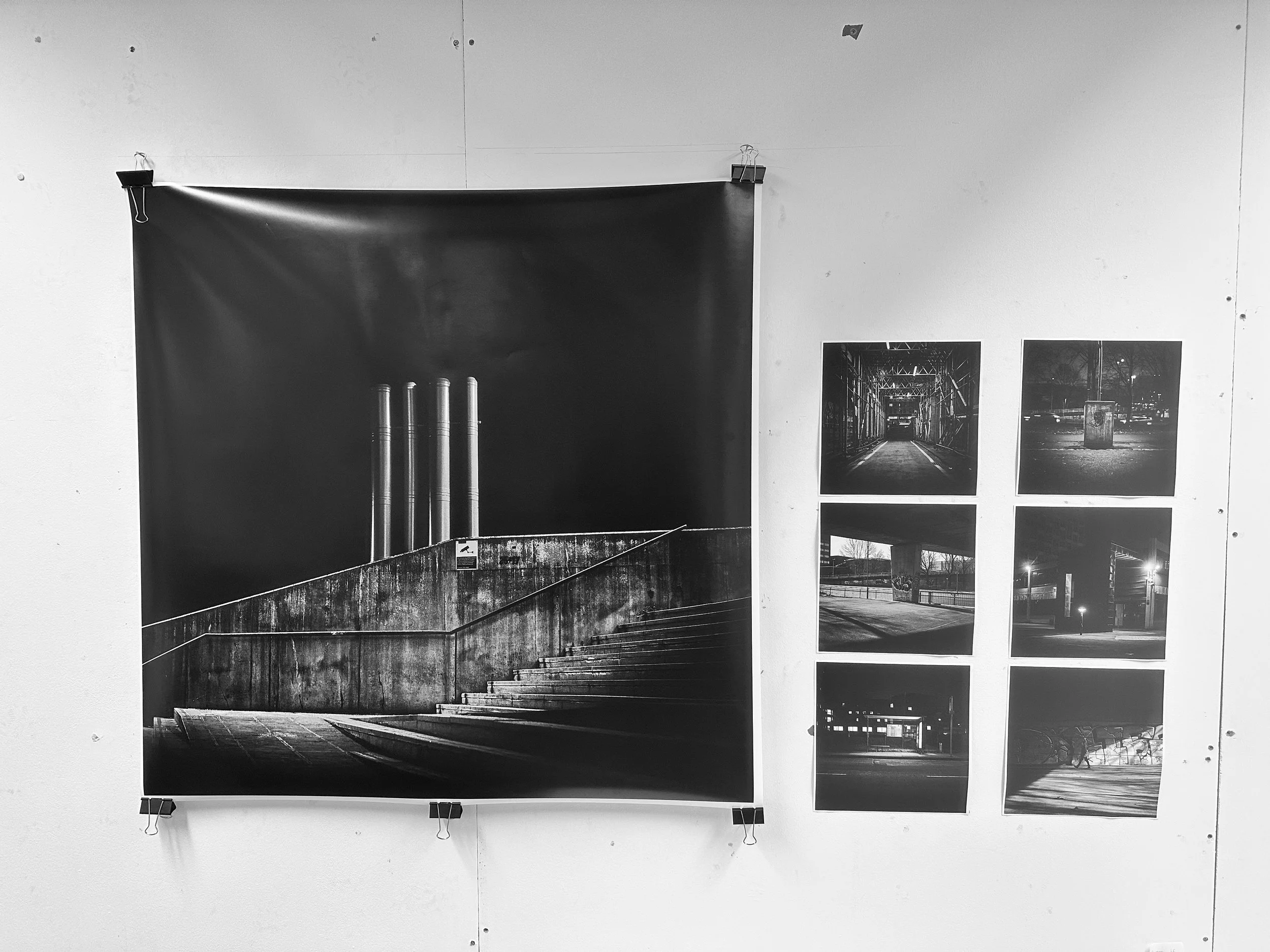Tales from the Loop: When Apathy Strikes
Chapter Four: Pushing Through the Creative Impasse
When Apathy Creeps In: Repeating the Loop Without Spark
In the weeks following the development of my process and routine, I did exactly what I set out to do. I walked The Loop almost every day. Whenever I was in town, I walked it. I talked about The Loop to anyone who would listen. I thought about it constantly, and if someone approached me for a photoshoot, I already knew the perfect location.
I began to notice the changing graffiti, shifting weather, and emotional contrasts depending on the time of day.
Rediscovering a Subject: The Four Chimneys
The four chimneys I had initially dismissed began to hold a strange significance. They became a kind of monolith — a quiet anchor I kept returning to. Most people passed them without notice, but I kept stopping, framing, circling. I must have photographed them from every angle imaginable.
As February turned into March and then April, the routine began to wear on me. Familiarity bred not contempt, but indifference. I still walked the route, but the excitement started to fade. In an effort to reignite that spark, I began experimenting with Intentional Camera Movement (ICM) photography — trying to inject abstraction and instability into the now overly familiar.
I hoped that through these experiments, I’d push through the plateau and reach a moment of revelation. That all this repetition might crescendo into something transformative. But it didn’t, at least not yet. Despite my efforts, I remained stuck somewhere between inspiration and inertia.
Printing as Progress: From Screen to Scale
That frustration led me to shift focus. Instead of making new images, I began reviewing the work I had already made. I started printing. Sorting. Thinking about scale. I pinned prints to the wall. I tried sequences. And again, the image of the chimneys pulled me in.
This tactile shift helped renew some energy — I started printing bigger, exploring how size might alter meaning. I imagined the work not on a screen or in a book, but as large physical presences. Meanwhile, I spent more time walking The Loop without a camera, simply observing, reflecting on why certain places drew me in. What was their story? What patterns existed across the route? What was this work actually trying to say?
Finding a Language: A Chance Encounter with Hypernormalisation
“Formally unchanging rituals continued to be performed long after their original meanings had faded.”
- Alexei Yurchak
I don’t remember exactly how I stumbled across the theory of hypernormalisation — a condition where a false or surreal version of reality becomes so widespread that it’s accepted as normal, even by those who know it’s not — but it felt like something clicked. It led me to the book Everything Was Forever Until It Was No More: The Last Soviet Generation by Alexei Yurchak.
The concept immediately resonated. Much like walking The Loop at night had changed my perspective, discovering this theory seemed to point toward a new way of understanding what I’d been doing all along.
This felt like the beginning of something.
